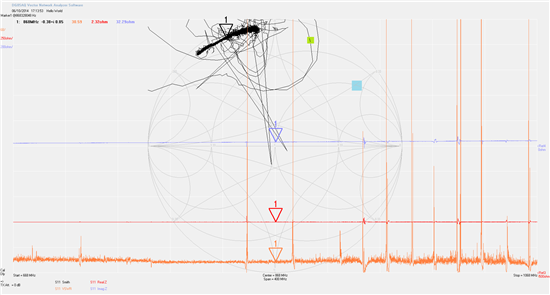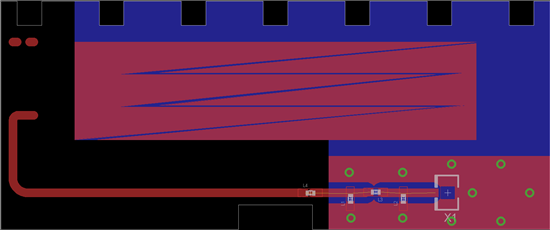Good afternoon,
this is my attempt to design a 868 MHz single-ended antenna for a CC1101's 50Ω balun. Click in the pictures to zoom in! :)
This is the antenna on its own, no matching components yet, I'm measuring using U-FL:
This is after adding the first C from the load, named "A":
That is nice, it follow what I want to do.
However, by adding the L, named "C" it does not seem to behave as expected. Blue square is where I want to go, as in the first picture. Green is where I really go when placing a L=4nH. Thus, to go to Blue square I decided to increment L to 5nH. However, I finish here at marker "1".
So, my question is:
- Do you recognize which may be my problem? It is not even following Smith Chart rules! My GND plane is quite small because of layout demands.
- I'm placing 0402 inductances as in the Antenna DK. However, I've seen many places and Application Notes which use 0603. Do you think this can be my problem?
Ok, have a nice day. I hope someone can illustrate me :)






